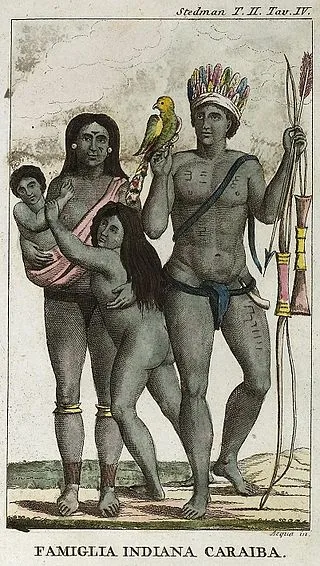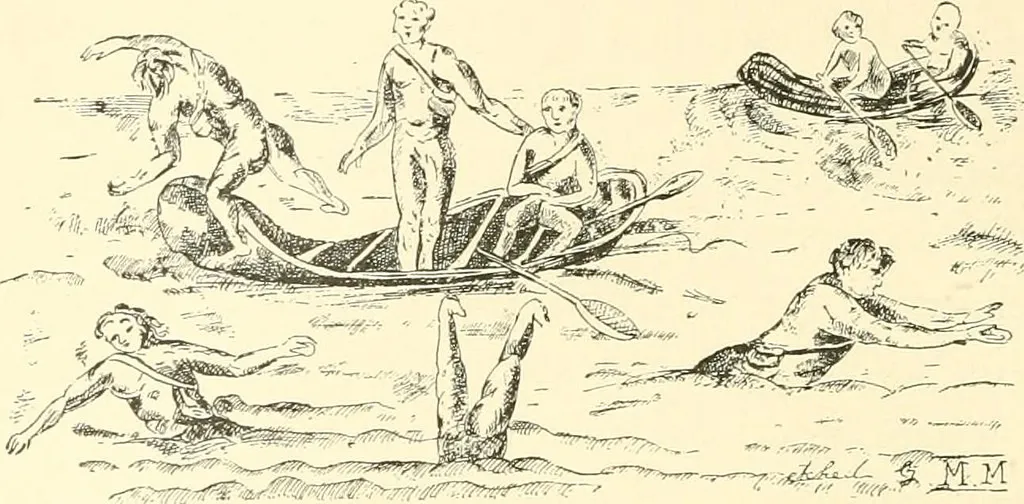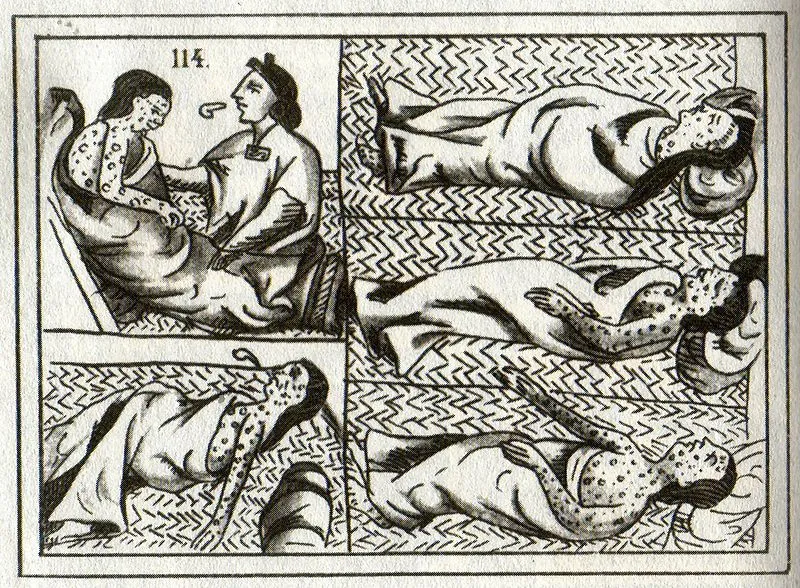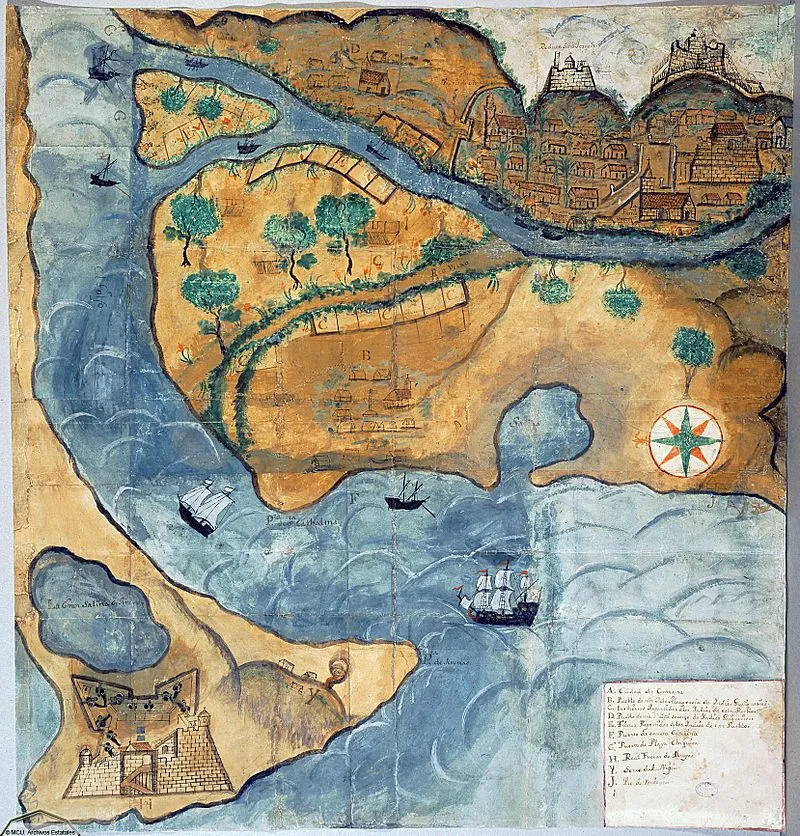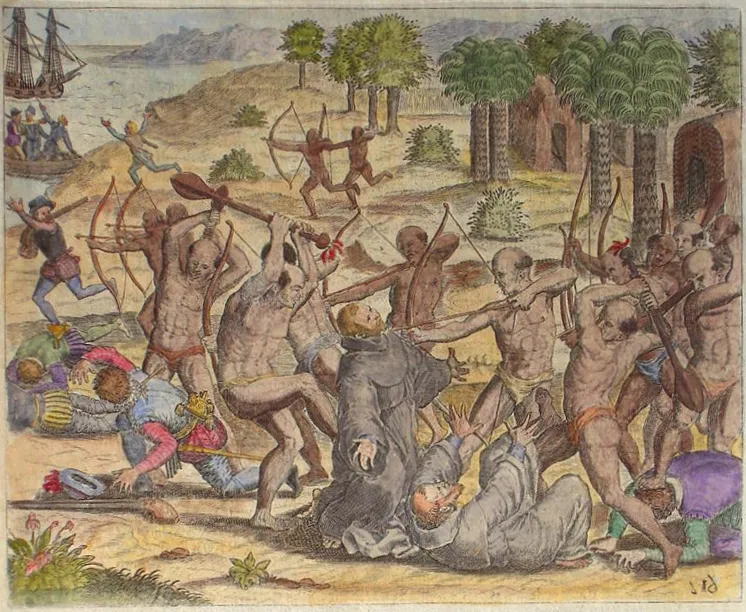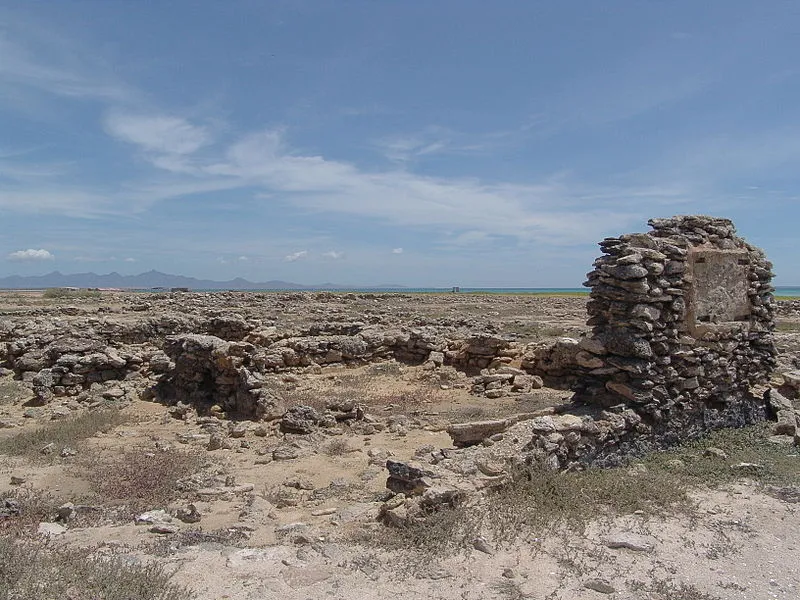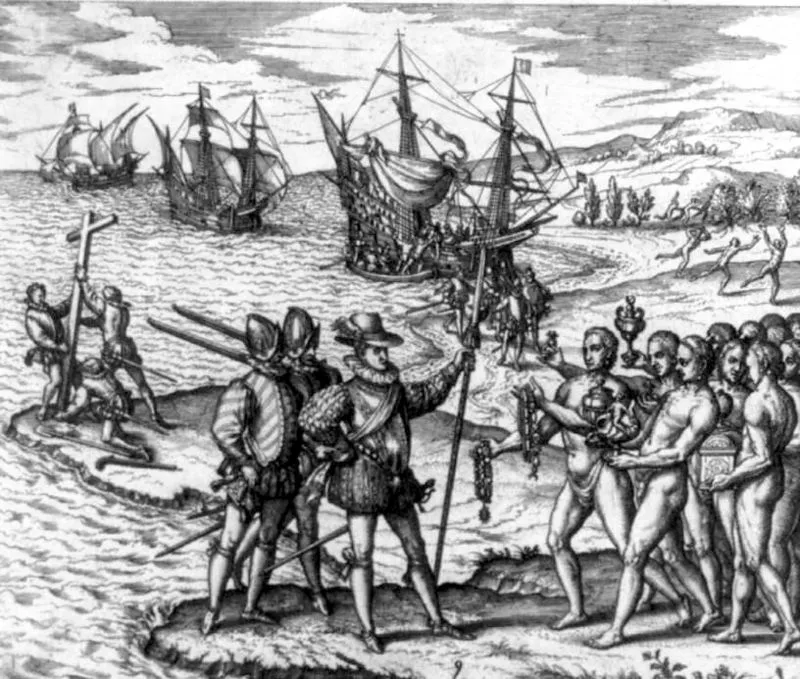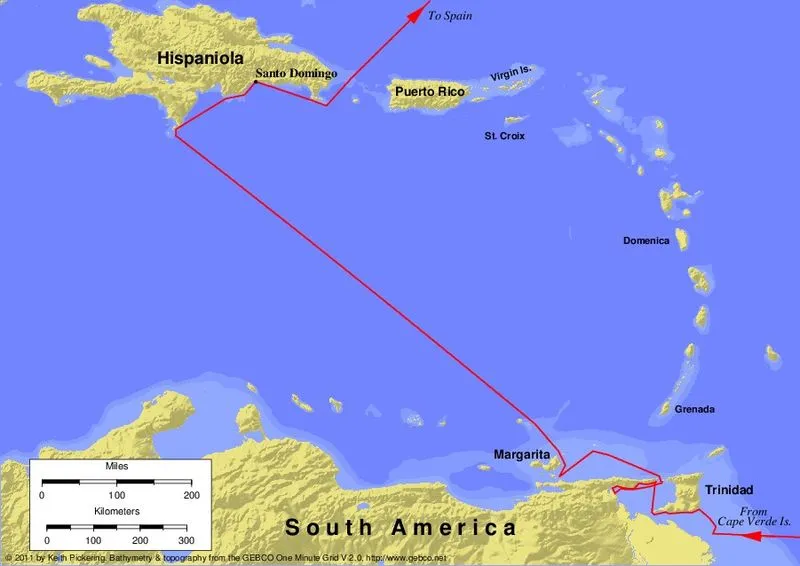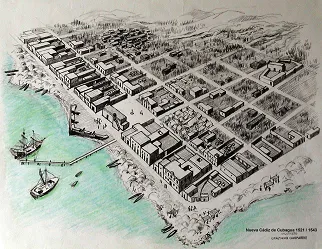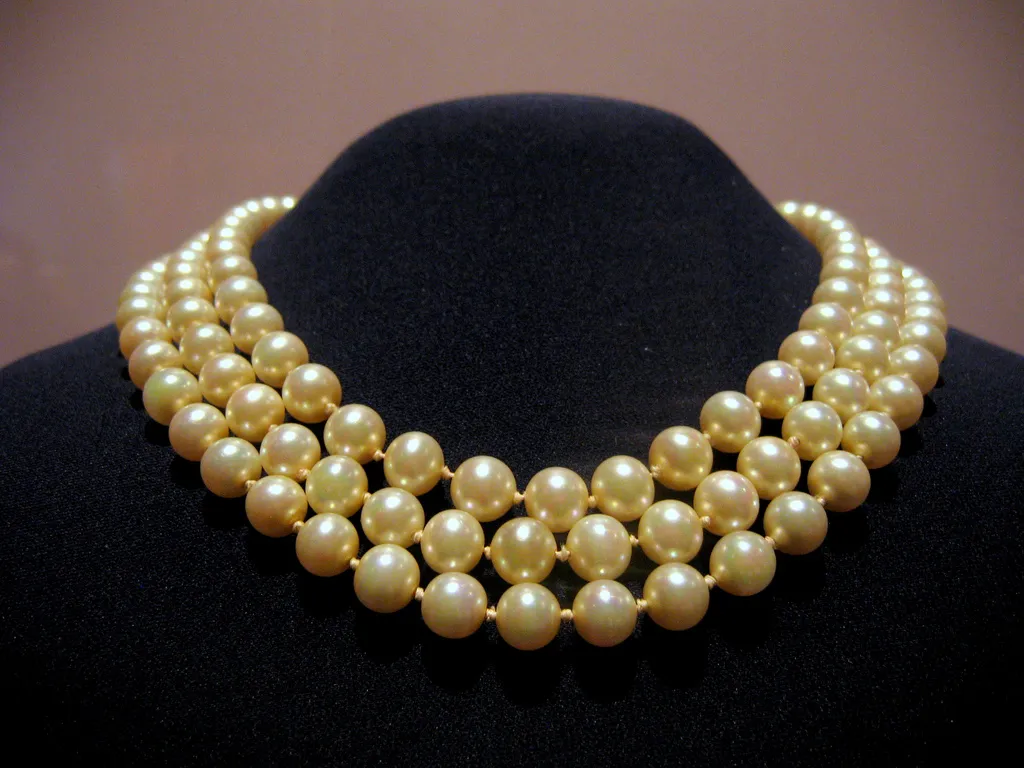Nueva Cádiz is considered the first city of Venezuela and of all Latin America. Its production and main interest on the part of the colonizers was the wide sustenance of pearls and oysters that were in the vicinity of the place. In a very short time, this island was practically exploited and the settlers were gradually leaving. Nowadays it is just a place of arrival for some fishermen who park their boats on the island and then continue their journey, but what really happened to this island called the city?
First settlements of the Spaniards on firm land and the island of America in Venezuela.
Of course, speaking of history makes us travel to the arrival of Christopher Columbus, the indigenous people he called the Indians and the reality, in which the continent as we know today as South America was. To begin to detail the first settlements of the Spaniards in the country, it is important to note that they did not reach the mainland as such, but rather the neighbouring islands from which, they were able to exploit large quantities of wealth such as gold, pearls and salt.
From the arrival of Christopher Columbus in 1492 until the beginning of 1520, the Spaniards did not see the fruit of their efforts in terms of the exploitation of precious minerals (mainly gold) which hung from the clothes of the indigenous people of the area. The people were exploited for pearl fishing and gold mining in the river basins of the newly occupied islands, currently known as Santo Domingo on the Dominican Republic and Haiti, Columbus called these territories Hispaniola. The intention was to follow the trade of all kinds of resources that were exploited between the conquerors and Castile in Spain.
With the discovery of pearls of the island of Cubagua, the colonizers settled there to take advantage of the supply of pearls and with the help of Lucayan people, African and Spanish labourers to maintain a stable economy within their own interests, however, this did not last long.
Foundation of Nueva Cádiz on the island of Cubagua
Columbus’s encounter of these islands on his third trip caused a lot of astonishment. At that time, he knew he had to do something to be able to subtract the pearls of these lagoons. On his trip, he discovered the island of Cubagua, Margarita and Coche, which he called Islands of Pearls and later the land of grace.
For the conquerors of this era, it was necessary to have a special document that would confirm this territory as a city. Under the supervision of Christopher Columbus himself and under the mandate of the Royal Audience of Santo Domingo, New Cadiz was founded in 1521. From that moment on, they could supply these infertile lands with food and fresh water so that fishing for pearls and oysters could continue.
As mentioned, this did not last long, because the indigenous people were deserting or getting sick from diseases that the Spaniards themselves were infecting them. The oysters also disappeared and it was then that the extinction of the first city of Venezuela began.
Of course, details are missing in the story of the origin of Nueva Cádiz. We can begin by mentioning that before Columbus himself touched the lands of Cubagua, as confirmed in documents by Fray Bartolomé de las Casas, many sailors and adventurers searched for pearls.
After mentioned everything in relation to its foundation, the indigenous uprising of 1520 left the island of Cubagua almost completely deserted. In 1526, Villa acquired the name Villa de Santiago de Cubagua, but apparently, it never had any significance.
At the end of 1528, Carlos V himself granted it the status of a city, calling it Nueva Cádiz. The town began being supplied with fresh water from the city we know today as Cumaná.
Among the insurrection of the Indians and the shortage of the oysters, another factor that influenced the desertion of the island was a tsunami that hit the city in the year 1541. Nevertheless, two years later a hurricane came to finish the work. After these fatal natural disasters, the oysters remained shattered and without indigenous labour, there was no other way but to leave the city.
Pirates, monarchies and Spanish colonizers, took much of the lands of Nueva Cádiz. They came only to steal and capture the indigenous peoples and then sell them as slaves, this was practically the routine of the island of Cubagua.
In fact, many of the Indigenous people were controlled by the missionaries were in charge of preaching the gospel. Spanish sailors arrived on the island and gained their trust by paying false tributes and creating an atmosphere of harmony. Inviting them with permission from the missionaries to eat on the ships, taking into captivity by surrounding and threatening with death. Many indigenous slaves died defending themselves or being slaves of other colonies.
By then the pearl industry was based on the labour of both indigenous and African slaves, engaged in diving to find the precious pearls. The shortage of fresh water was one of the main problems and many of these slaves died in the attempt to acquire the pearls that the colonizers forced them to find.
An approximate of 11 tons of pearls was being extracted in Nueva Cádiz while the city was “alive”. After the aforementioned events, the oysters, the population and even the structures were abandoned leaving the island a memory of something that could be more than just a source of colonial exploitation and the bloodshed of many innocent natives who gave their lives to make the settlers richer.
References
Photos: @highonthehog
Images: sources linked below
Floyd, Troy, The Columbus Dynasty in the Caribbean, 1492-1526. Albuquerque: University of New Mexico Press, pp. 205, 208, 1973
Romero, Aldemaro, Death and Taxes: the Case of the Depletion of Pearl Oyster Beds in Sixteenth-Century Venezuela, Conservation Biology, 2003
Orche, Enrique, Exploitation of pearl fisheries in the Spanish American colonies. De Re Metallica, 13: 19–33, 2009
Click on the coin to join our Discord Chat
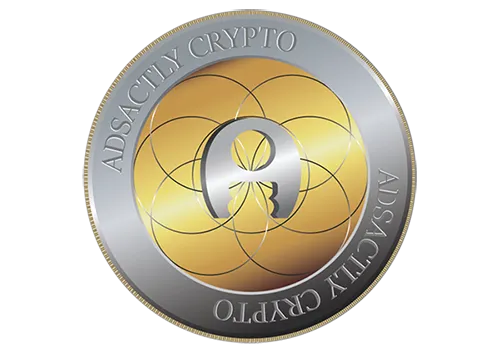
Vote @adsactly-witness for Steem witness!
Witness proposal is here:
Witness Proposal
Witness Proposal Update
Go To Steem Witness Page
In the bottom of the page type: adsactly-witness and press vote.

Use small letters and no "@" sign. Or, click here to vote directly!
Thank you!
